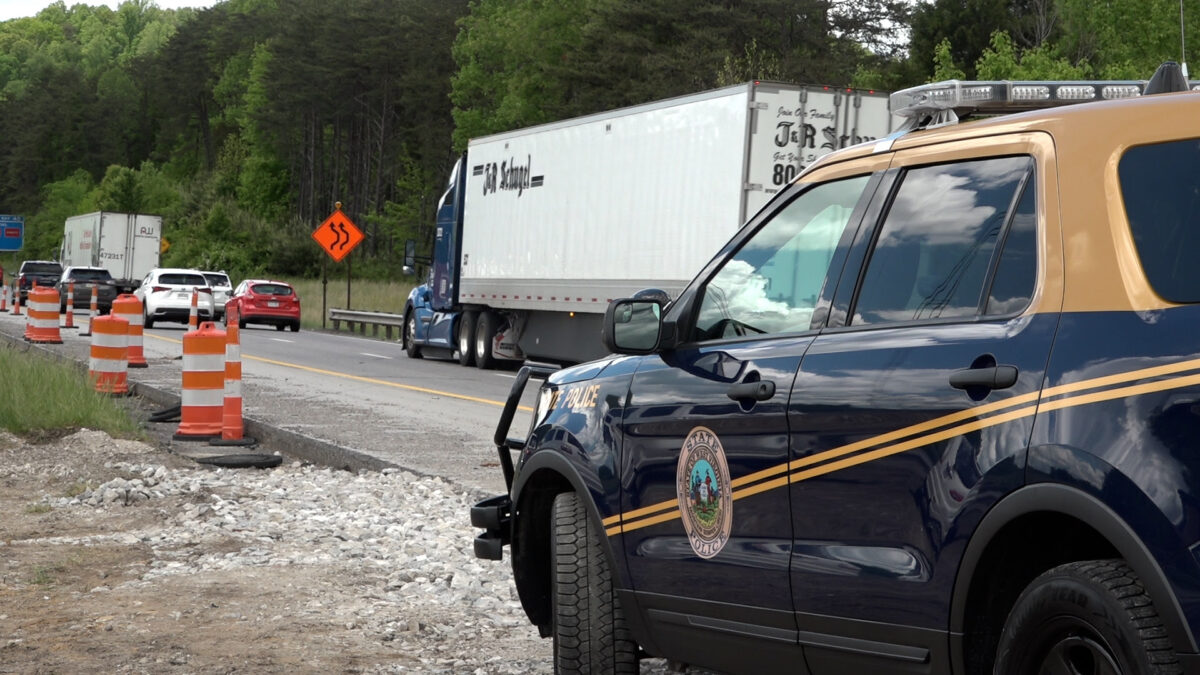Spring is the start of many things in West Virginia, including road work season. With work crews out in force around the state fixing potholes and repaving, there is an increased focus on the risks associated with the job.
Spring is the start of many things in West Virginia, including road work season. With work crews out in force around the state fixing potholes and repaving, there is an increased focus on the risks associated with the job.
Craig Howell was flagging traffic outside of Robert Bland Middle School in Weston on the evening of April 28 when a road worker’s worst nightmare came true.
“He was taking a turn. He took it too sharp inwards and hit me,” Howell said.
Howell got lucky, walking away with minor injuries to his leg. The driver, who stopped momentarily before fleeing the scene, is still being sought by authorities.
Howell said incidents like this and similar close calls happen despite all the precautions workers take.
“We set out signs and hopefully the traffic will pay attention to it, but most of the time people just drive by and don’t pay attention to them,” Howell said. “Everyone’s always in a hurry these days, are on their phones or any type of stuff to be distracted.”
WVDOT says that on average, 85 percent of the people who die in work zone crashes are drivers or passengers of the vehicles involved in the wreck.While work zone fatalities are low, state statistics show they do seem to be on the rise.
There were 18 fatal crashes in West Virginia work zones in just two years, from 2018 to 2020, according to most recent data. There were 15 fatal crashes in the entire seven-year period preceding 2018.
Recent data shows the trend is worsening, which means road workers and drivers alike are at an increased risk.
According to data from the state’s Department of Transportation Traffic Engineering Division, 2021 saw nearly 900 work zone crashes, with more than 300 resulting in injuries. Five of those crashes proved to be fatal.
“People that are getting hurt are our fathers and mothers. These are our family members, our neighbors. And they should not have to worry about making it home in the evening,” said Josh Booth, R-Wayne.
Booth is a state delegate, but he grew up helping his mother run the family business, Highway Safety, Inc.
“When my mom said go play in traffic she meant it,” he said.
Booth may joke around a little bit, but as he brings a new generation into the business, he takes the job seriously. So does the state of West Virginia.
Last month, as temperature started to rise and regular road work commenced across the state, the Public Service Commission of West Virginia, along with the West Virginia Department of Transportation and other law enforcement agencies announced an increase of enforcement in the state’s work zones.
Booth said having officers on scene is a crucial addition to the safety arsenal, but he acknowledged it’s simply not possible for departments to dispatch officers to every single work zone in the state. That’s why he wants to modernize work zone enforcement.
“I introduced some legislation to use camera assisted enforcement,” he said. “The idea was not to give you a fine or give you a ticket. In fact, it was the opposite. It was just to get you to slow down.”
Booth’s bill failed to pass this year, but he said there is increasing interest. For now, cameras or not, the biggest factor determining worker safety on West Virginia roads is drivers.
“When they see a work zone and slow down because most of these guys have family themselves and they just want to go home at the end of the day.” Howell said.
